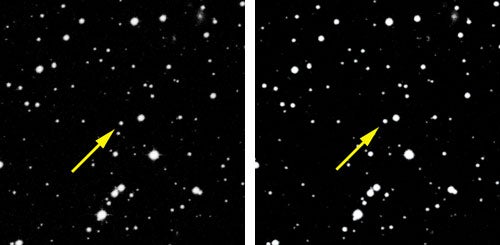A large proper motion is a great way to discover a nearby star, but it’s not a good way to measure distance. The size of the proper motion depends on both the star’s distance from us and its motion through space. For example, the stars Alpha (α) Centauri and Mu (μ) Cassiopeiae have almost equally large proper motions — but Mu Cas is nearly 6 times farther away than Alpha Cen. The proper motions appear equally large because Mu Cas moves through space nearly 6 times faster. Alpha Cen has a large proper motion primarily because it’s close to us; Mu Cas has a large proper motion primarily because it moves through space so fast.
To determine a star’s distance, astronomers measure its parallax — the small shift that occurs in a star’s apparent position as Earth orbits the Sun. The larger the parallax, the closer the star is to Earth. Right now, astronomers have measured a rough parallax for the new star, but, by early next year, they hope to have a precise one. Then we’ll know exactly how close our new neighbor is. — KEN CROSWELL, BERKELEY, CALIFORNIA










